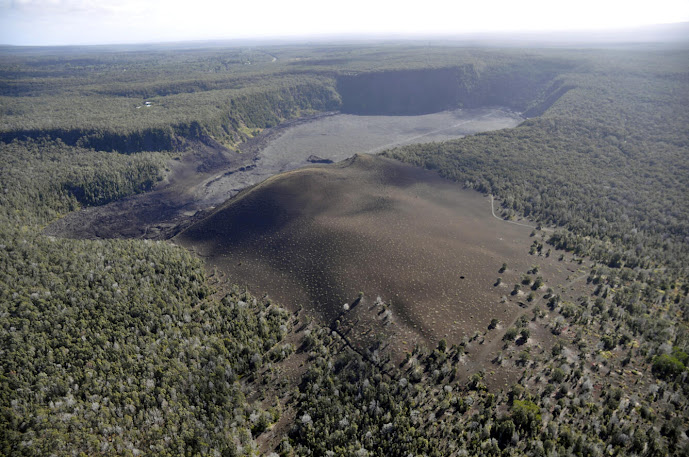 |
| In several states and countries, providing a living wage is used to positively brand a company. |
The measure has already passed the state Senate. The link to submit testimony to the House of Representatives is https://www.capitol.hawaii.gov/. The Hawai'i Democratic Party's own message to the legislature says: "This significant increase is urgently needed and long overdue. Many Hawai'i residents statewide and here on Hawai'i Island are struggling with the extremely high and rising cost of living for housing, gas, electricity, food and medical care. Please do not defer this needed increase."
To read comments, add your own, and like this story, see www.facebook.com/kaucalendar/. See latest print edition at www.kaucalendar.com. See upcoming events at https://kaunewsbriefs.blogspot.com/2022/03/upcoming-events-for-kau-and-volcano.html
SEVERAL BILLS ADDRESSING ABANDONED VEHICLES are moving through the Hawai'i Legislature. Supportive testimony came from local governments around the state, including the Council of Mayors, this county's Department of Environmental Management and Hawai'i County Council.
HB 1414 would make "a person who is the registered owner of a vehicle that was deemed abandoned or derelict subject to a tiered fine system."
HB1413 would allow "the director of finance of a county to require payment of outstanding charges and fines owed to the county relating to the disposition of an abandoned vehicle within the county by the registered owner of the abandoned vehicle before issuing a certificate of registration or completing a transfer of ownership." |
| An abandoned vehicle, tagged by the county, near Pahala Transfer Station. Photo by Julia Neal |
HB 1412 "would require the counties to provide a minimum distance a vehicle must be moved within a specified timeframe after a vehicle is initially inspected for abandonment to avoid an official classification of abandonment. Requires that, before a vehicle can be classified as being abandoned, notice be provided that the vehicle must be moved the specified distance within the specified timeframe or be subject to removal."
HB 1411 would require that "the transferee's and transferor's address be provided on the certificate of ownership when the title to a motor vehicle is transferred. Clarifies that the signature of the transferee and signature of the transferor each serve as an attestation by that respective party as to the validity of the information on the certificate of ownership. Imposes a fine on a party who provides false or fraudulent information."
Look up bills and submit testimony at https://www.capitol.hawaii.gov/.
To read comments, add your own, and like this story, see www.facebook.com/kaucalendar/. See latest print edition at www.kaucalendar.com. See upcoming events at https://kaunewsbriefs.blogspot.com/2022/03/upcoming-events-for-kau-and-volcano.html
HAWAIʻI ORGANIC SEED SUMMIT will be a two-day virtual gathering to be held on Friday and Saturday Mar. 25 and 26 from 2 - 5 p.m. The summit is presented by Organic Seed Alliance, GoFarm Hawaiʻi, Hawaiʻi Seed Growers Network, and University of Hawaiʻi West Oʻahu's Sustainable Community Food Systems Program. Join to learn about local seed projects happening in Hawaiʻi and pathways for becoming a knowledgeable seed grower. There is no cost to attend and registration is required in advance. To learn more and register, visit https://seedalliance.org/events/hawaii-organic-seed-summit/.
To read comments, add your own, and like this story, see www.facebook.com/kaucalendar/. See latest print edition at www.kaucalendar.com. See upcoming events at https://kaunewsbriefs.blogspot.com/2022/03/upcoming-events-for-kau-and-volcano.html
A NEW STATE OF THE ART INSTRUMENT HELPS DETECT UNDERGROUND VOLCANIC PROCESSES. The Absolute Quantum Gravimeter can measure very small mass changes beneath the ground surface. USGS Hawaiian Volcano Observatory scientists say they are excited to help the public understand the innovation in this week's Volcano Watch:
All objects have a mass and therefore a gravity field. Earth’s gravitational pull is slightly stronger in areas with more mass and slightly weaker in areas with less mass. Gravimeters measure gravitational attraction.
In volcano studies, gravimeters help scientists detect subtle changes in gravity caused by magma movements. When measuring gravity in volcanically active areas, a measurement of stronger gravity can indicate more magma below the ground surface.There are two main types of gravimeters: relative and absolute.
 |
The USGS Hawaiian Volcano Observatory’s Absolute Quantum Gravimeter is undergoing set-up, testing, and calibration before installation at the summit of Kīlauea. USGS image by A. Ellis |
Absolute gravimeters directly measure the acceleration of gravity. Free-fall absolute gravimeters, the most common type, use lasers to measure the free-fall acceleration of a small reflecting prism (a test mass) in a vacuum. Unlike relative gravimeters, absolute gravimeters do not drift nor degrade in accuracy over time. However, they are large in size, have delicate mechanical parts, require an ample power supply, and are not designed for use in harsh field conditions such as volcanoes. Those that are field portable are not capable of long-term continuous measurements or sensitive enough to detect the small changes needed for volcano monitoring.
Similar to the free-fall absolute gravimeters, HVO’s new AQG measures the acceleration of a small test mass in a vacuum. However, the AQG overcomes the limitations of classical free-fall absolute gravimeters by dropping clouds of laser-cooled rubidium atoms instead of small prisms. This allows for accurate and long-term continuous measurements. The AQG is also compact in size and can be deployed in the field at active volcanoes and run continuously without "drift."
The same model of AQG has been installed on the north flank of Mount Etna volcano in Italy, which frequently erupts. The instrument has successfully recorded many months of high-quality data despite high vibration noise levels. It continues to help improve volcano hazard reporting and crisis management planning in Italy.
Although the AQG is new to HVO, gravity monitoring has a long history in Hawai‘i. First measurements in the 1800s and 1900s were difficult and often unsuccessful until portable relative gravimeters were developed. Since the 1970s, relative gravimeters have been successfully used for measurements at over 65 benchmarks on the Island of Hawai‘i. These benchmarks are measured every couple of years to detect magma accumulation or shallowing within Mauna Loa and Kīlauea volcanoes over long time scales.
 |
| Gravimeters at Kilauea in 2020. USGS photo by I. Johanson |
Following the 2018 Kīlauea events, HVO received funding from the Additional Supplemental Appropriations for Disaster Relief Act of 2019 [H.R. 2157]. As a start to rebuilding the continuous gravity network for Kīlauea, one gravimeter was reinstalled on Halemaʻumaʻu crater floor in June 2021. In April 2022, there are plans to install two additional continuous relative gravimeters at other locations on Kīlauea.
The combination of the new Absolute Quantum Gravimeter, new continuous gravimeters, and ongoing campaign measurements makes the future of using gravity measurements to monitor, investigate, and assess hazards of Hawaiian volcanoes exciting and promising.
To read comments, add your own, and like this story, see www.facebook.com/kaucalendar/. See latest print edition at www.kaucalendar.com. See upcoming events at https://kaunewsbriefs.blogspot.com/2022/03/upcoming-events-for-kau-and-volcano.html
SEE UPCOMING EVENTS IN KAʻŪ & VOLCANO
See March edition of The Kaʻū Calendar newspaper at



